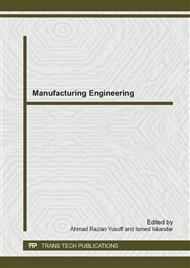[1]
Li J, Green T (2011) Coiled Tubing Sand Clean Outs Utilizing BHA Technology and Simulation Software in Demanding Wellbore Geometries. SPE 149051.
DOI: 10.2118/149051-ms
Google Scholar
[2]
Li J, Luft B (2006) Fills Cleanout with Coiled Tubing in the Reverse Circulation Mode. Paper IADC/SPE 102661.
DOI: 10.2118/102661-ms
Google Scholar
[3]
Walton IC (1995) Computer Simulator of Coiled Tubing Wellbore Cleanouts in Deviated Wells Recommends Optimum Pump Rate and Fluid Viscosity. Paper SPE 29291.
DOI: 10.2118/29491-ms
Google Scholar
[4]
Li S, Li Z, Lin R and Li B (2010) Modeling of sand cleanout with foam fluid for vertical well. Paper SPE 120449.
DOI: 10.2118/120449-pa
Google Scholar
[5]
Li J, Misselbrook GJ and Seal J (2008) Sand cleanout with coil tubing: choice of process, tools, or fluids? Paper SPE 113267.
DOI: 10.2118/113267-ms
Google Scholar
[6]
Beyer AH, Millhone RS and Foote RW (1972) Flow behavior of foam as a well circulating fluid. Paper SPE 3986.
DOI: 10.2118/3986-ms
Google Scholar
[7]
Blauer RE, Mitchell BJ and Kohlhaas CA (1974) Determination of laminar, turbulent and transitional foam flow losses in pipes. Paper SPE 4885.
DOI: 10.2118/4885-ms
Google Scholar
[8]
Phillips, AM, Couchman, DD and Wike JG (1987) Successful field application of high temperature rehology of CO2 foam fracturing fluids. Paper SPE 16416.
DOI: 10.2118/16416-ms
Google Scholar
[9]
Saintpere S, Marcillat Y, Bruni F, and Toure A (2000) Hole cleaning capabilities of drilling foams compared to conventional fluids. Paper SPE 63049.
DOI: 10.2118/63049-ms
Google Scholar
[10]
Herzhaft B, Toure A, Bruni F and Saintpers S (2000) Aqueous foams for underbalanced drilling: The question of solids. Paper SPE 62898.
DOI: 10.2118/62898-ms
Google Scholar
[11]
Li Y and Kuru E (2003) Numerical modeling of solid particles transport with foam in horizontal wells. Journal of Canadian Petroleum Technology, Vol. 42, No. 10.
DOI: 10.2118/03-10-06
Google Scholar
[12]
Li Y and Kuru E (2004) Prediction of critical foam velocity for effective cutting transport in horizontal wells. Paper SPE 89324.
DOI: 10.2118/89324-ms
Google Scholar
[13]
Lourence A, Miska S, Reed T, Pickell M and Takah N (2003) Study of the effects of pressure and temperature on the rehelogy of drilling foams and frictional pressure losses. Paper SPE 84175.
DOI: 10.2118/84175-ms
Google Scholar
[14]
Bailey M, Blanco I and Rosine R (2006) Reel to injector fluid flow analysis using CFD software. Paper SPE 100141.
DOI: 10.2118/100141-ms
Google Scholar
[15]
Bilgesu HI, Ali MW, Aminian K and Ameri S (2002) Computational Fluid Dynamics (CFD) as a tool to study cutting transport in wellbores. Paper SPE 78716.
DOI: 10.2118/78716-ms
Google Scholar
[16]
Miska SZ, Reed T and Takach N (2003) Cutting transport with foam in horizontal & highly inclined wellbores. Paper SPE/IADC 79856.
DOI: 10.2118/79856-ms
Google Scholar
[17]
Chen Z, Ahmed RM, Miska SZ, Takach NE, M Yu and Pickell MB (2007) Experimental study on cuttings transport with foam under simulated horizontal downhole conditions. Paper SPE 99201.
DOI: 10.2118/99201-ms
Google Scholar


